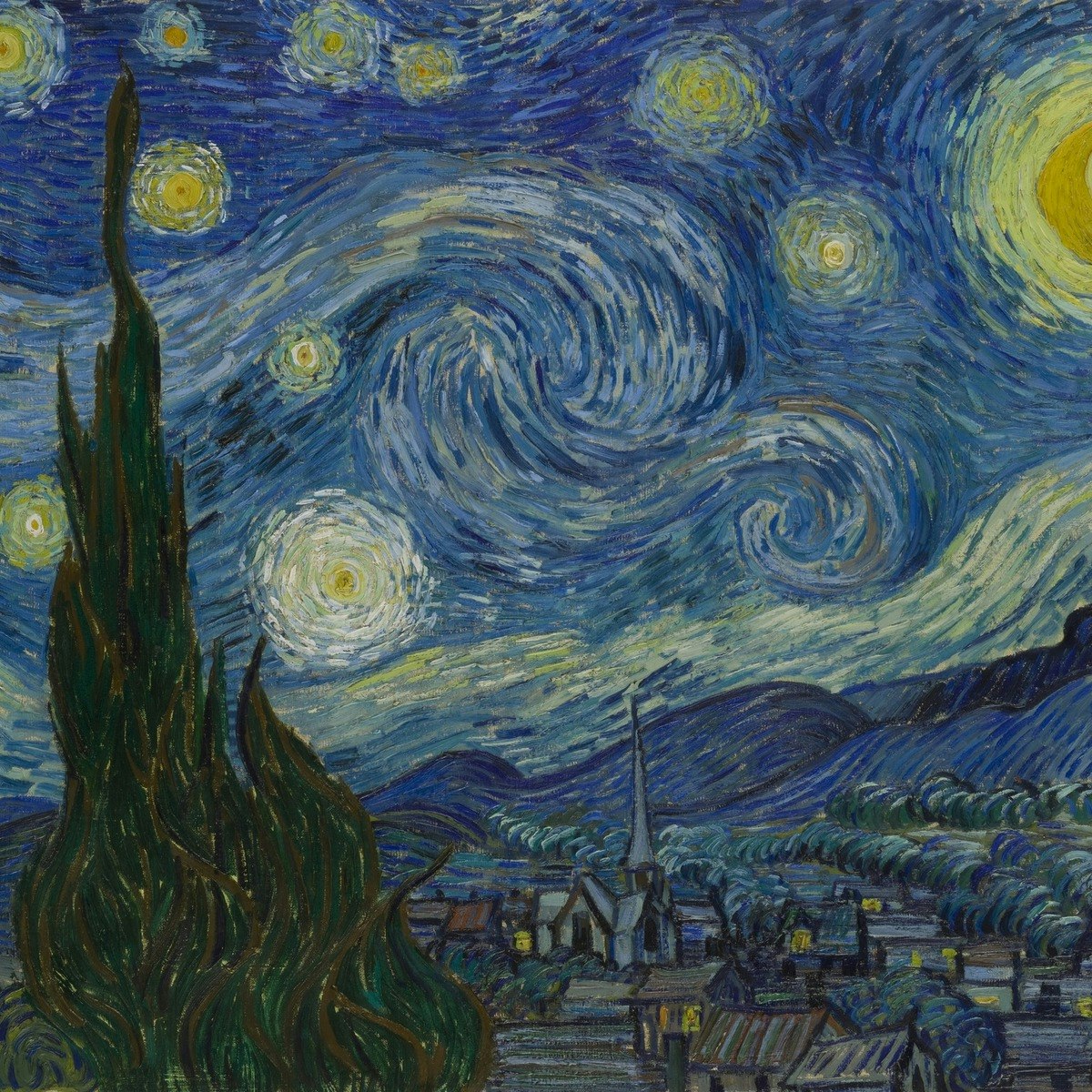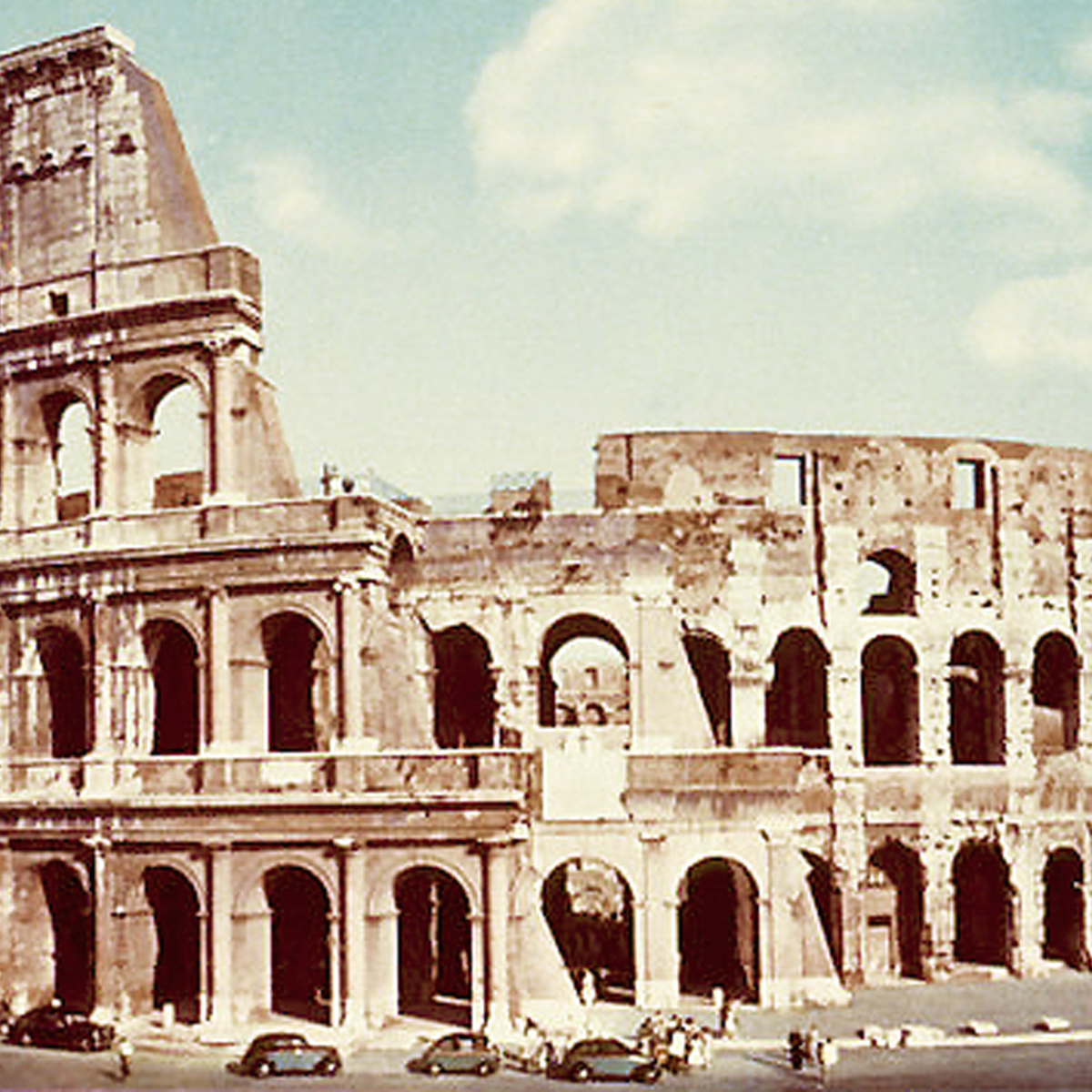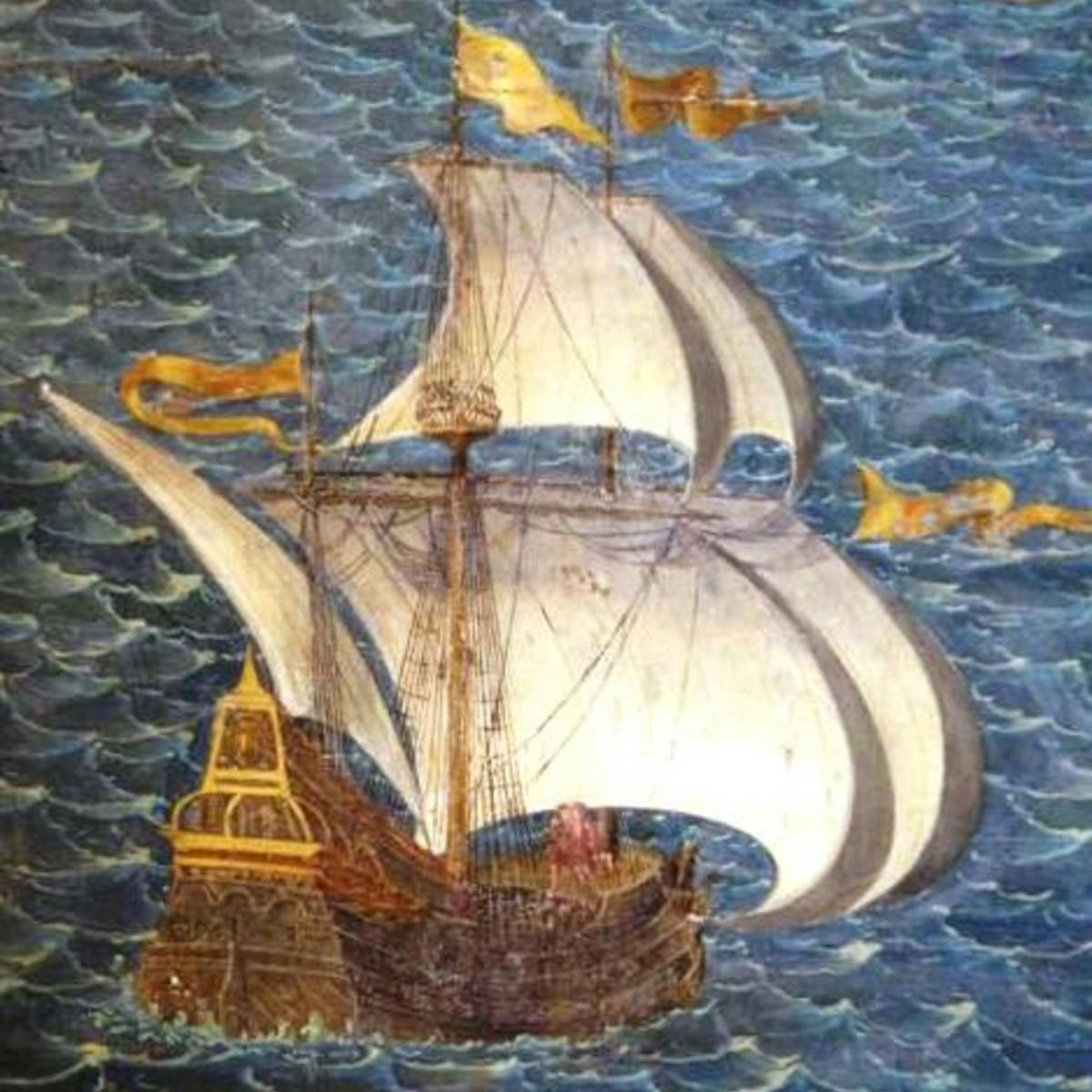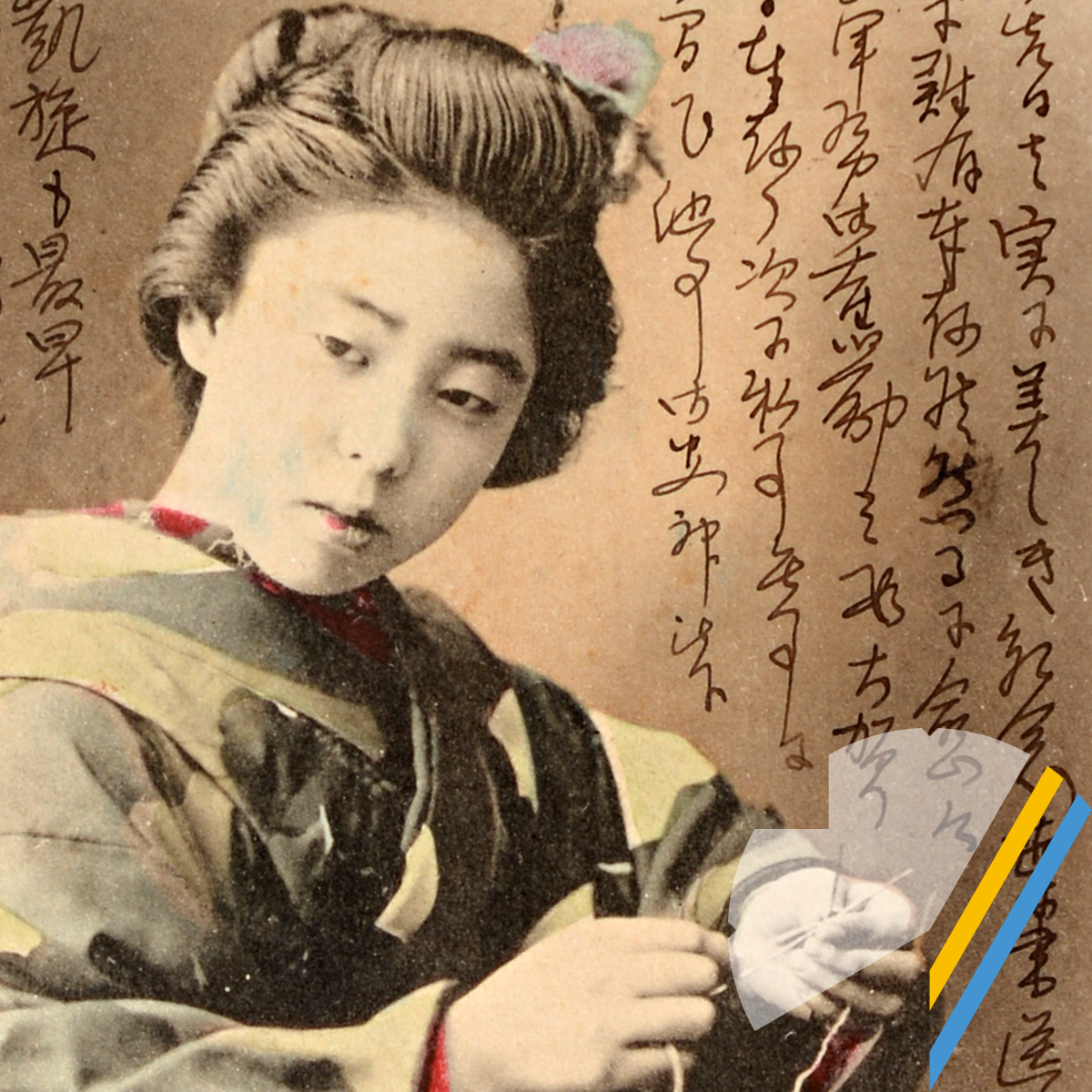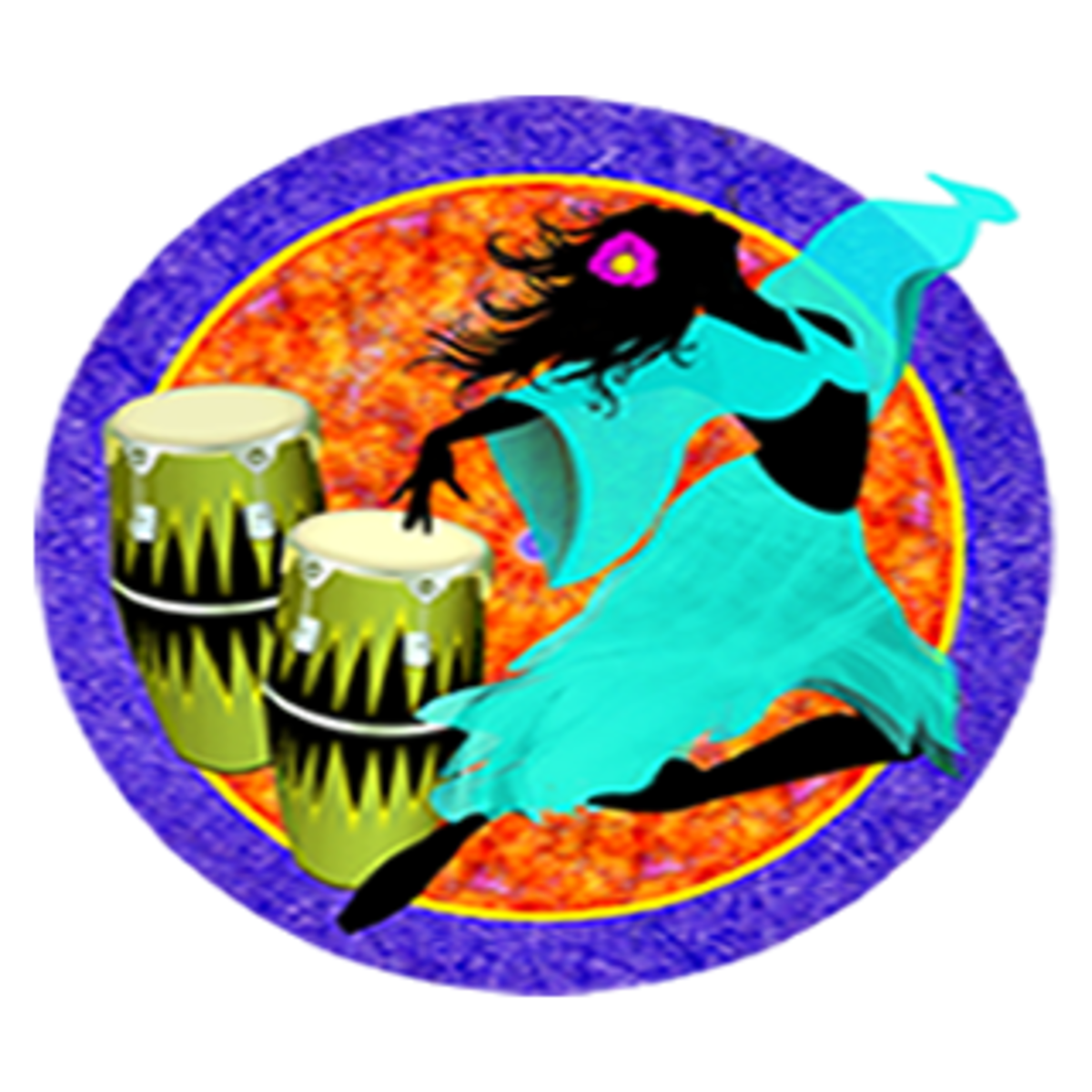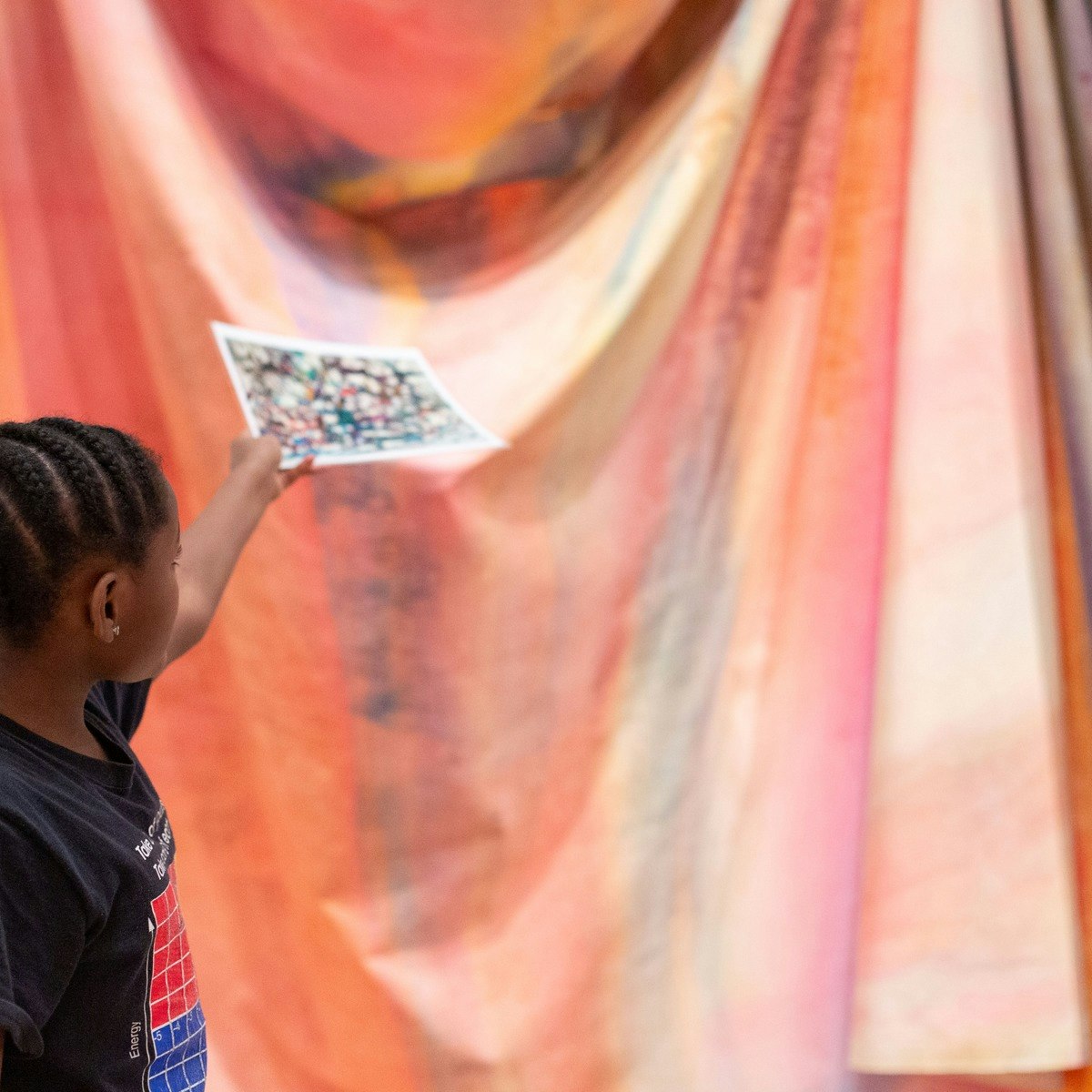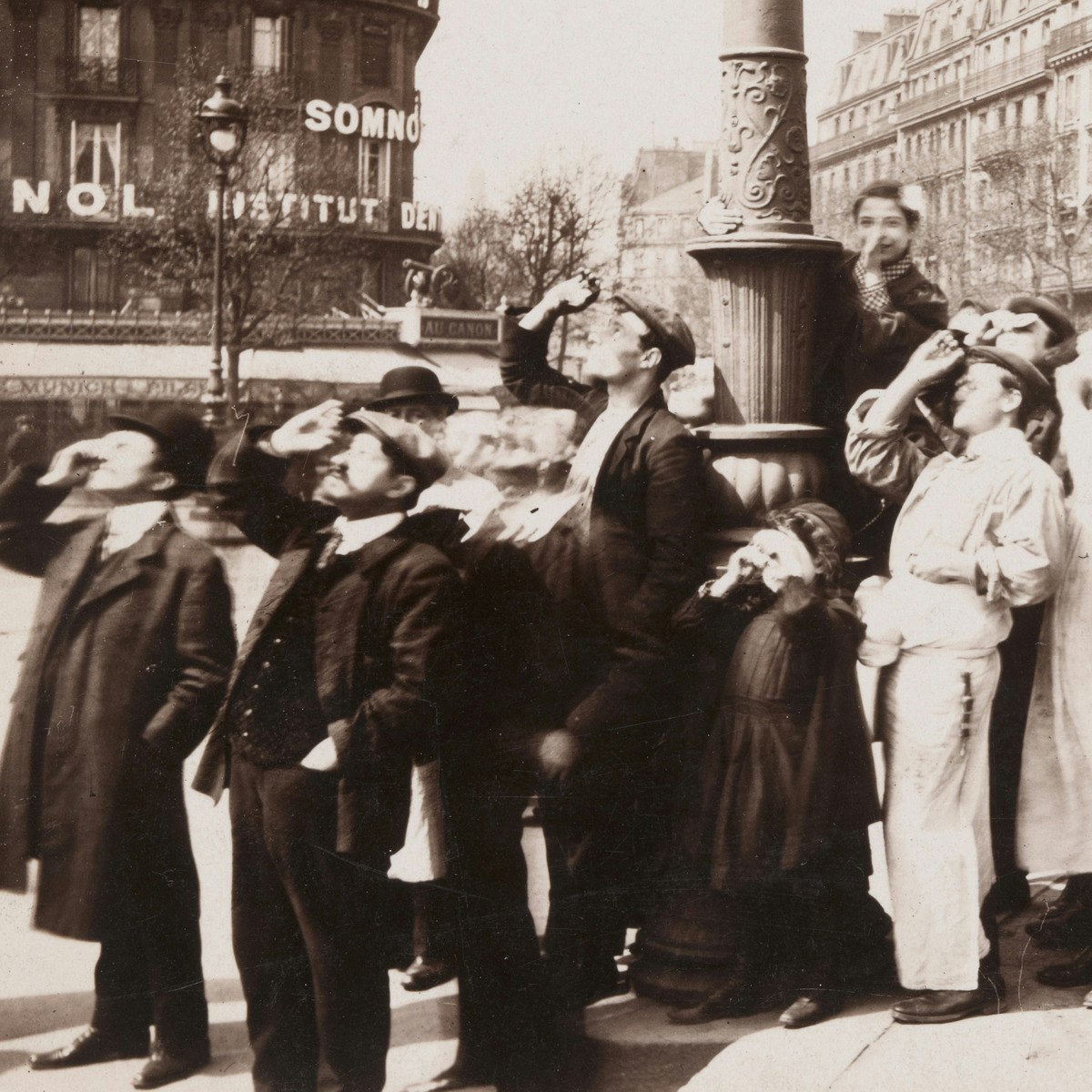Art historian
Art Historian: A Career Guide
Art history is the academic study of art objects in their historical development and stylistic contexts. This includes analyzing painting, sculpture, architecture, decorative arts, photography, printmaking, installation, performance, and digital art. It's a field dedicated to understanding how, why, and by whom art was made, and what it meant to its original audiences and subsequent viewers across time.
Working as an art historian can be deeply rewarding. You might spend your days researching the hidden meanings in a Renaissance masterpiece, authenticating a newly discovered artifact, or curating an exhibition that brings historical narratives to life for the public. The thrill of discovery, the intellectual challenge of interpretation, and the opportunity to share profound cultural insights make this a compelling path for those passionate about visual culture and history.
Introduction to Art History as a Discipline
Defining Art History and Its Scope
At its core, art history seeks to understand the history of visual arts. It's not just about appreciating beauty; it's an academic discipline that investigates the origins, meanings, and development of art within specific cultural, social, political, and economic contexts. Art historians analyze individual works, artists' careers, stylistic movements, and the broader visual culture of different eras and regions.
The scope is vast, spanning geographical boundaries and historical periods, from prehistoric cave paintings to contemporary digital installations. Art historians delve into questions about creation, reception, patronage, function, and the changing definition of "art" itself. They use various methodologies to interpret visual evidence and construct historical narratives.
Understanding art history means appreciating that art objects are more than aesthetic items; they are historical documents. They offer unique insights into the beliefs, values, technologies, and daily lives of the societies that produced them. Studying art history equips you with critical tools for visual analysis and historical interpretation.
Analyzing Visual Culture and Context
A central objective of art history is the meticulous analysis of visual culture. This involves looking closely at artworks to understand their formal qualities—like composition, color, line, and texture—and how these elements contribute to their meaning and effect. It also involves interpreting iconography, the symbols and themes embedded within an artwork.
Context is paramount. Art historians strive to place artworks within their original historical and societal frameworks. This means exploring the artist's biography, the circumstances of the work's creation, the patrons who commissioned it, the intended audience, and the prevailing artistic conventions and intellectual currents of the time. Without context, interpretations can be superficial or misleading.
This contextual analysis helps reveal how art reflects, shapes, and sometimes challenges societal norms and power structures. By understanding the context, we gain a richer appreciation of the artwork's significance and its layered meanings, both in its own time and for subsequent generations.
Connections to Other Fields
Art history is inherently interdisciplinary, drawing heavily on methodologies and insights from adjacent fields. History provides the essential framework for understanding chronology and societal change. Anthropology offers perspectives on cultural practices, rituals, and the social functions of objects, particularly in non-Western contexts.
Philosophy, especially aesthetics, informs discussions about beauty, perception, and the nature of art itself. Archaeology often provides the physical artifacts and site data that art historians study, particularly for ancient civilizations. Literature can offer parallel narratives or reveal cultural attitudes reflected in art.
More recently, fields like Museum Studies have become closely linked, focusing on curation, conservation, and public engagement. Sociology helps analyze patronage systems and the art market. These connections enrich art historical inquiry, allowing for more nuanced and comprehensive interpretations of visual culture.
Common Misconceptions
A common misconception is that art history is simply about memorizing artists' names and dates or deciding what is "good" art. While knowledge of key figures and periods is necessary, the discipline emphasizes critical analysis, interpretation, and understanding context over subjective judgment or rote learning.
Another misunderstanding is that art history is an impractical field with limited career options, often perceived as solely leading to academic or museum roles. While these are traditional paths, an art history background cultivates transferable skills in research, critical thinking, writing, and visual analysis applicable to various sectors.
Finally, some believe art history focuses exclusively on Western "high art." While historically centered on European traditions, the field has significantly broadened its scope to include global art histories, popular culture, decorative arts, and critical perspectives on power, colonialism, and representation, challenging older, narrower definitions of the canon.
Art Historian: Role and Responsibilities
Core Tasks and Activities
The daily work of an art historian often revolves around research. This involves identifying questions about artworks, artists, or movements, and then pursuing answers through archival research, library work, object analysis, and engagement with scholarly literature. Findings are typically disseminated through publications (books, articles) or presentations.
Authentication and attribution are specialized tasks, requiring deep connoisseurship and often scientific analysis to determine an artwork's creator, date, and authenticity. Art historians may also advise on conservation, helping preserve artworks for future generations by understanding their materials and historical context.
Education is another key function, whether teaching university courses, delivering public lectures, leading museum tours, or writing interpretive materials for exhibitions. Curating involves conceptualizing, organizing, and installing exhibitions, selecting objects, researching them, and communicating their significance to the public.
Diverse Work Environments
Art historians work in a variety of settings. Academia is a major employer, with positions at universities and colleges involving teaching and research. Museums and galleries employ art historians as curators, educators, registrars, and directors, focusing on collection management, exhibition development, and public programming.
Auction houses like Christie's and Sotheby's employ specialists for research, appraisal, and cataloging artworks for sale. Cultural heritage organizations, government agencies, and historical societies also hire art historians for preservation, research, and policy roles. Opportunities exist in publishing (art magazines, academic presses) and art consulting or advising for private collectors and corporations.
Some art historians work independently as freelance researchers, writers, or consultants. The specific environment shapes the day-to-day focus, whether it's scholarly publication, public engagement, market analysis, or object care, but the core skills of research and interpretation remain central.
These foundational courses provide a broad overview of art history, covering significant periods and movements, ideal for those starting their exploration.
This foundational text offers a comprehensive survey of artistic developments across different eras.
Collaboration and Partnerships
Art historians rarely work in complete isolation. Collaboration is essential, particularly in museum settings. Curators work closely with conservators to understand the physical condition of objects and ensure their proper care. They collaborate with exhibition designers to create engaging displays and with educators to develop interpretive programs.
Partnerships with archivists and librarians are crucial for accessing primary source materials. Research might involve consulting scientists for technical analysis of materials or collaborating with historians and anthropologists for broader contextual understanding. Working with living artists offers unique insights into contemporary practice.
In academia, collaborative research projects, co-authored publications, and interdisciplinary conferences are common. Even independent scholars rely on networks of colleagues for peer review, discussion, and sharing expertise. Effective communication and teamwork are vital skills in the field.
Public Engagement and Outreach
A significant aspect of the profession involves making art and its history accessible and meaningful to the public. This can take many forms, from curating engaging museum exhibitions with clear interpretive labels and interactive elements, to writing articles for popular magazines or contributing to documentary films.
Public lectures, gallery talks, and workshops provide direct interaction with diverse audiences, fostering appreciation and understanding. Art historians working in educational roles develop curricula and resources for students of all ages. Many contribute to museum websites, blogs, and social media, sharing insights and responding to public interest.
This public-facing work is crucial for demonstrating the relevance of art history beyond academia. It helps cultivate cultural literacy, encourages critical thinking about visual information, and advocates for the preservation and study of cultural heritage. It bridges the gap between scholarly research and broader public understanding.
Historical Development of Art Historical Practice
From Connoisseurship to Critical Theory
The discipline of art history evolved from earlier practices of connoisseurship, which focused on attributing works to specific artists based on stylistic analysis and discerning quality. Thinkers like Giorgio Vasari in the Renaissance laid groundwork with biographical approaches. By the 19th century, formalism emerged, emphasizing the analysis of form and style independent of context, championed by figures like Heinrich Wölfflin.
The 20th century saw major shifts. Iconography and iconology, developed by scholars like Erwin Panofsky, sought to uncover deeper symbolic meanings within artworks by relating them to broader cultural and intellectual traditions. Social history of art, influenced by Marxist thought, began examining art's relationship to social class, economics, and power structures.
Later developments included feminist art history, challenging the male-dominated canon and analyzing gender representation. Post-structuralism and critical theory introduced perspectives questioning authorship, meaning, and the very foundations of historical narratives, emphasizing interpretation as fluid and context-dependent. The discipline continues to evolve, incorporating post-colonial theory, queer theory, and global perspectives.
These courses explore specific historical periods and artistic ideas, reflecting the evolution of art historical focus.
Key Methodological Approaches
Several key methodologies shape art historical practice. Formalism involves close visual analysis of an artwork's composition, style, materials, and technique, often comparing works to establish stylistic development or attribute authorship. This approach focuses primarily on the object itself.
Iconography and iconology delve into the subject matter and symbolism within art. Iconography identifies specific themes and symbols, while iconology interprets their deeper cultural meanings within historical context, often drawing on literature, philosophy, and religious texts.
Social history of art examines the artwork's relationship to the society that produced it. It considers factors like patronage, the art market, the artist's social status, political influences, and how art reflects or reinforces social structures and ideologies. This approach moves beyond the individual object to its broader context.
Other important methodologies include psychoanalytic approaches (exploring the artist's psyche or viewer response), feminist critique (analyzing gender dynamics and representation), post-structuralist methods (deconstructing meaning and authorship), and post-colonial theory (examining the impact of colonialism on art and its interpretation).
Impact of Digital Technologies
Digital technologies have profoundly impacted art historical research and practice. Online databases and digitized museum collections provide unprecedented access to images and information, facilitating comparative analysis and research from anywhere in the world. High-resolution imaging allows for detailed examination of artworks previously impossible without direct physical access.
Digital tools enable new forms of analysis, such as mapping networks of artists and patrons, visualizing large datasets of artworks, or creating 3D reconstructions of historical sites. Geographic Information Systems (GIS) can map the provenance and movement of objects. Digital platforms also facilitate collaborative research and the dissemination of findings through online journals, blogs, and digital exhibitions.
However, digital methods also present challenges, including issues of image rights, the variable quality of digital surrogates, the digital divide limiting access for some, and the need for new skills in digital literacy and data management. The field is actively engaging with the potentials and pitfalls of the digital humanities.
Notable Debates and Controversies
Art history is not without its controversies, particularly concerning attribution. Determining the authentic creator of an artwork can involve intense debate among experts, sometimes hinging on subtle stylistic nuances or contested documentary evidence. Famous cases involve works potentially by Leonardo da Vinci, Rembrandt, or Vermeer, where attributions can significantly impact market value and scholarly understanding.
Provenance research, tracing the ownership history of artworks, is another area fraught with challenges, especially regarding works looted during wartime (like Nazi-era confiscations) or acquired during colonial periods. Debates over restitution and repatriation—returning objects to their original owners or places of origin—are ongoing ethical and political issues.
Interpretive debates also arise, such as differing views on the meaning of complex symbolic works or reassessments of artists' intentions based on new evidence or theoretical perspectives. The ongoing critique of the traditional Western canon and efforts to incorporate more diverse global art histories also spark significant discussion and sometimes resistance within the field.
Formal Education Pathways
Undergraduate Foundations
A bachelor's degree in art history, or a related field like history or visual studies with an art history concentration, is typically the first step. Undergraduate programs provide a broad survey of art across different periods and cultures, introducing key concepts, methodologies, and major artistic movements.
Coursework usually includes introductory surveys (e.g., Ancient to Medieval, Renaissance to Modern), followed by more specialized courses on specific eras (Baroque Art), regions (Arts of Asia), mediums (History of Photography), or themes (Women in Art). Students learn essential skills in visual analysis, critical thinking, research methods, and academic writing.
Many programs encourage or require courses in relevant foreign languages and related humanities disciplines. Internships at local museums, galleries, or cultural institutions are highly recommended to gain practical experience. A strong undergraduate foundation prepares students for graduate study or entry-level positions in the arts sector.
These courses cover foundational knowledge often encountered in undergraduate studies, spanning various periods and regions.
These books offer broad surveys suitable for foundational learning.
Graduate Specialization
A Master of Arts (MA) in Art History is often the minimum requirement for curatorial positions in museums and roles in galleries, auction houses, or arts administration. MA programs typically take two years and allow students to specialize in a particular period (e.g., Renaissance Studies), region (e.g., Latin American Art), or medium (e.g., Architecture).
Graduate coursework involves intensive seminars focusing on specific topics and methodologies, requiring significant reading, research, and writing. Students hone their analytical skills and deepen their specialized knowledge. Many MA programs require proficiency in one or more foreign languages relevant to the area of specialization (often German, French, or Italian for European art).
A master's thesis, an original piece of research, is usually required. Internships and practical experiences remain crucial. An MA can be a terminal degree for careers in the museum world or a stepping stone towards a PhD for those aiming for academic careers or senior curatorial roles.
These courses delve into specific areas like the Renaissance or distinct art forms, reflecting graduate-level specialization.
Books focusing on specific periods or theoretical aspects support specialized graduate study.
Doctoral Studies (PhD)
A Doctor of Philosophy (PhD) in Art History is generally required for university-level teaching positions and senior curatorial roles in major museums. PhD programs are highly research-intensive and can take five to seven years or more to complete.
The process involves advanced seminar coursework, comprehensive exams demonstrating mastery of major and minor fields of study, and proficiency in multiple foreign languages relevant to the research area. Significant time is dedicated to original research, culminating in a doctoral dissertation—a book-length work making a substantial contribution to the field.
PhD candidates often gain teaching experience as teaching assistants or instructors. Funding typically comes through fellowships, assistantships, or grants. The PhD demands deep intellectual commitment, strong research and writing skills, and perseverance. It is the highest academic qualification in the field.
Importance of Study Abroad and Primary Source Access
For many areas of art history, direct engagement with artworks and primary sources (like archival documents or archaeological sites) is crucial. Study abroad programs and research travel offer invaluable opportunities to experience art and architecture firsthand, rather than relying solely on reproductions.
Seeing artworks in their original settings or within museum collections allows for a deeper understanding of scale, material, technique, and context. Visiting archives, libraries, or excavation sites enables access to unique documents and artifacts essential for original research. Many graduate programs encourage or facilitate such experiences.
These opportunities not only enhance research but also provide cultural immersion and language practice. They allow students to build international professional networks. For specializations focusing on specific geographic regions, extended periods of study or research abroad are often considered essential for developing true expertise.
Courses focusing on specific regions or cultural exchanges highlight the global nature of art history.
Digital Resources and Independent Study
Leveraging Virtual Collections and Databases
The digital age offers incredible resources for independent learners and those supplementing formal education. Many world-class museums now provide extensive virtual tours and high-resolution images of their collections online, such as the Metropolitan Museum of Art or the British Museum. Online databases like JSTOR or Artstor (often accessible via libraries) compile vast archives of scholarly articles and images.
Platforms like Google Arts & Culture aggregate content from numerous institutions globally. These resources allow detailed study of artworks, comparative analysis, and exploration of diverse collections without geographical constraints. They are invaluable tools for research, learning, and simple appreciation.
Utilizing these digital archives effectively requires developing digital literacy skills—knowing how to search efficiently, evaluate sources critically, and manage digital information. They represent a democratization of access to cultural heritage, empowering self-directed study in art history.
Online courses provide structured learning pathways through specific art historical topics, accessible from anywhere.
Training in Digital Archiving and Research Methods
Beyond accessing existing digital resources, understanding how digital archives are created and managed is increasingly valuable. Skills in digital archiving techniques—such as metadata creation, digital preservation standards, and database management—are relevant for careers in museums, libraries, and cultural heritage institutions.
Online courses and workshops offer training in digital humanities tools and methodologies specifically applicable to art history. This might include learning Geographic Information Systems (GIS) for spatial analysis, network analysis tools for mapping relationships, or text analysis software for studying large corpora of documents.
Acquiring these digital skills can enhance research capabilities and open up new career avenues within the evolving landscape of cultural heritage management and digital scholarship. It complements traditional art historical training with contemporary technical expertise.
Finding relevant courses is easy on OpenCourser. You can browse categories like Art History or use the search function to find courses on specific digital tools or techniques relevant to the field.
Building a Portfolio through Independent Projects
For those pursuing art history outside traditional academic paths, or wanting to supplement their formal education, undertaking independent projects is an excellent way to build skills and demonstrate expertise. This could involve creating a research blog focusing on a specific area of interest, writing critical reviews of local exhibitions, or developing a digital project like an online exhibition or interactive map.
Contributing to platforms like Wikipedia by improving articles on art historical topics can also showcase research and writing abilities. Volunteering for local historical societies or small museums offers hands-on experience, even if unpaid. Documenting these projects creates a portfolio that demonstrates initiative, passion, and practical skills to potential employers or graduate programs.
Online courses often include projects that can form part of such a portfolio. Successfully completing a challenging online course and earning a certificate can also signal commitment and knowledge acquisition. OpenCourser's Learner's Guide offers tips on how to structure self-learning and showcase accomplishments.
These courses often involve practical elements or unique perspectives useful for independent projects.
Validating Non-Traditional Learning
While formal degrees remain the standard credential in many parts of the art world, non-traditional learning pathways are gaining recognition, especially when supplemented by demonstrable skills and experience. Completing a series of rigorous online courses in a specialized area, particularly those offering certificates from reputable universities or institutions, can validate knowledge acquisition.
Building a strong portfolio of independent research projects, publications (even on blogs or independent platforms), or practical work (like volunteer curatorial projects) provides tangible evidence of capabilities. Networking effectively and seeking mentorship from professionals in the field can also help bridge the gap left by a non-traditional background.
It's important to be realistic; certain roles, especially in academia, remain largely inaccessible without traditional PhDs. However, for careers in galleries, arts administration, publishing, or certain museum roles, a compelling portfolio and demonstrated passion combined with certificates from high-quality online learning can create viable pathways, particularly for career changers.
OpenCourser helps learners track their progress and save courses they're interested in or have completed using the "Save to List" feature, which can be useful for organizing a non-traditional learning path.
Art Historian Career Progression
Entry-Level Opportunities
Graduates with a bachelor's or sometimes a master's degree often start in entry-level positions. In museums, this might include roles like curatorial assistant, registrar's assistant, or education assistant, supporting senior staff with research, object handling, documentation, or program delivery. Galleries might offer positions as gallery assistants or associates, involving administrative tasks, sales support, and interacting with visitors.
Other starting points include research assistant roles for academic projects or auction houses, library or archive assistant positions in cultural institutions, or administrative roles in arts non-profits. These positions provide valuable exposure to the field, opportunities to learn practical skills, and a chance to build professional networks.
Competition for these roles can be strong, and internships during studies are often crucial for securing a first job. Initial salaries may be modest, reflecting the entry-level nature of the work and the competitiveness of the arts sector.
Mid-Career Transitions and Specialization
With experience and often further education (like an MA or PhD), art historians can progress to more specialized and responsible roles. A common mid-career path involves becoming an assistant or associate curator in a museum, taking on more responsibility for collection research, exhibition development, and acquisitions.
Alternatively, some pursue an academic track, aiming for tenure-track professor positions after completing a PhD. This involves a heavy focus on research, publication, teaching, and university service. Others might move into specialized roles in auction houses (as specialists in certain categories), senior positions in arts administration, or roles in cultural heritage management or consulting.
Mid-career transitions might involve shifting between sectors, for example, moving from academia to a museum directorship, or vice-versa. Specialization deepens, focusing on specific areas of expertise. Networking, publications, and a strong track record become increasingly important for advancement.
Leadership Roles in Cultural Institutions
Senior leadership positions in the art world typically require significant experience, advanced degrees (often a PhD), and a strong record of achievement in research, curation, or administration. Roles like Chief Curator, Head of Collections, Museum Director, or University Department Chair involve strategic oversight, staff management, fundraising, and representing the institution publicly.
These positions demand not only deep art historical knowledge but also strong leadership, financial management, and communication skills. Leaders shape the vision and direction of their departments or institutions, navigating complex challenges related to funding, audience engagement, ethical considerations, and changing cultural landscapes.
Progression to leadership often involves decades of experience and a national or international reputation. It represents the pinnacle of careers within museums, academia, or major cultural organizations, carrying significant responsibility and influence.
Consultancy and Freelance Work
Experienced art historians can leverage their expertise through freelance or consulting work. This might involve advising private collectors on acquisitions, providing provenance research for galleries or auction houses, writing catalogue essays for exhibitions, or offering expert opinions for legal cases involving art.
Freelance curating, organizing exhibitions for various institutions on a project basis, is another possibility. Some art historians work as independent scholars, pursuing research and publication outside of traditional institutional affiliations, often funded by grants or fellowships.
Consultancy requires a strong reputation, specialized knowledge, and excellent networking skills. It offers flexibility and autonomy but lacks the stability and benefits of institutional employment. It can be a viable path for established experts seeking diverse projects or a different work-life balance.
According to the U.S. Bureau of Labor Statistics, the job outlook for related fields like Curators, Museum Technicians, and Conservators projects growth around 11% from 2022 to 2032, faster than the average for all occupations, but competition remains high for positions. Median pay in May 2023 was $63,020 for curators. Opportunities and salaries vary greatly based on institution size, location, and funding.
Ethical Challenges in Art Historical Practice
Provenance Research and Restitution
One of the most significant ethical challenges is provenance research: tracing the ownership history of artworks. This is crucial for identifying objects looted during conflicts (e.g., Nazi-era plunder) or acquired unethically during colonial periods. Establishing clear provenance can be difficult due to gaps in records or deliberate obfuscation.
When illicit histories are uncovered, complex debates arise about restitution (returning art to original owners or their heirs) or repatriation (returning cultural artifacts to their countries or communities of origin). These issues involve legal complexities, competing claims, and moral considerations about historical injustices and cultural heritage.
Art historians play a vital role in conducting meticulous provenance research and contributing expert knowledge to these debates. Balancing the responsibilities of stewardship within collecting institutions with ethical obligations towards rightful owners or source communities is a constant challenge.
Cultural Appropriation and Interpretation
Interpreting art from different cultures or historical periods requires sensitivity to avoid cultural appropriation or imposing external values and perspectives. Art historians must strive to understand artworks within their original cultural contexts, acknowledging the potential biases of their own backgrounds and methodologies.
Debates arise over who has the authority to interpret certain cultural forms and whether interpretations adequately respect the perspectives of source communities. Accusations of misrepresentation or exploitation of cultural heritage can occur, particularly when dealing with sacred objects or traditions of marginalized groups.
Ethical practice involves critical self-reflection, engaging with diverse voices and perspectives (including those from within the culture being studied), and acknowledging the power dynamics inherent in cross-cultural interpretation. It requires moving beyond purely aesthetic analysis to consider the social and political implications of representation.
Understanding cultural context is key to ethical interpretation.
Commercial Interests vs. Academic Integrity
The art world involves both academic study and a significant commercial market. Art historians working in academia, museums, or the market (auction houses, galleries) can face tensions between scholarly objectivity and commercial pressures. Attributions, for example, have huge financial implications, potentially creating conflicts of interest.
Maintaining academic integrity means basing conclusions on rigorous evidence and sound methodology, resisting pressure to authenticate or value works based on market desires. For those working within the market, balancing fiduciary duty to clients with ethical responsibilities regarding authenticity and provenance requires careful navigation.
Transparency about potential conflicts of interest is crucial. The relationship between non-profit museums and the commercial art world, particularly regarding donations and acquisitions influenced by market trends or donor interests, also presents ongoing ethical considerations.
Decolonizing Art Historical Narratives
A major contemporary ethical project within art history is decolonization. This involves critically examining how the discipline's history, canons, and methodologies have been shaped by colonialism and Eurocentric perspectives. It seeks to challenge narratives that marginalize or misrepresent non-Western art and artists.
Decolonizing practices include diversifying curricula and museum collections to represent global art histories more equitably, centering voices and perspectives from formerly colonized regions, questioning traditional periodizations and stylistic categories, and addressing the legacies of colonial collecting practices through provenance research and repatriation dialogues.
This ongoing process requires a fundamental rethinking of how art history is researched, taught, and curated. It aims to create a more inclusive, equitable, and historically accurate understanding of global visual culture, acknowledging the power structures that have historically shaped the field.
These books delve into museum practices and critical perspectives relevant to ethical considerations.
Global Art Market Dynamics
Influence of Geopolitics and Economics
The global art market is significantly influenced by broader geopolitical shifts and economic trends. Economic prosperity in certain regions often fuels increased art collecting and market activity, as seen with the rise of buyers from emerging economies. Conversely, economic downturns or political instability can dampen market confidence and prices.
Geopolitical events, trade relations, and cultural diplomacy also play a role. International art fairs, biennales, and museum loans reflect and shape global cultural flows. Shifts in political power can impact funding for arts institutions and influence which types of art gain prominence or face censorship.
Art historians, particularly those working in the market or studying contemporary art, need to understand these macroeconomic and geopolitical forces. They shape patterns of patronage, collecting trends, and the international circulation of artworks, influencing which artists and movements gain global recognition.
Emerging Markets and Canon Formation
The increasing participation of collectors and institutions from emerging markets (such as China, India, the Middle East, and Latin America) is reshaping the global art landscape. This has led to greater visibility and market value for artists from these regions, challenging the traditional dominance of Western art in the market and in critical discourse.
This shift influences canon formation—the process by which certain artists and artworks come to be regarded as historically significant. As global perspectives gain prominence, traditional art historical narratives are being expanded and revised to incorporate a wider range of artistic traditions and contemporary practices.
Museums and academic programs are increasingly focusing on global contemporary art, reflecting these market dynamics and a broader push towards inclusivity. Art historians are engaging with new critical frameworks to understand and contextualize these developments.
NFTs and the Digital Art Landscape
The rise of Non-Fungible Tokens (NFTs) and digital art has introduced new dynamics and challenges. NFTs provide a mechanism for verifying ownership and authenticity of unique digital assets, creating new market possibilities for digital artists and collectors. This has led to high-profile sales and intense speculation.
Art historians are grappling with how to contextualize NFTs within the longer history of art, technology, and markets. Questions arise about the definition of digital ownership, the aesthetic value of NFT-associated art, its long-term preservation, and the environmental impact of blockchain technologies.
While the initial hype cycle may have cooled, the impact of digital technologies on art creation, distribution, and ownership continues to evolve. Understanding this landscape is increasingly important for those studying contemporary art and the future of the art market.
Role of Insurance, Authentication, and Conservation
The art market relies heavily on industries providing insurance, authentication, and conservation services. Insuring valuable artworks against damage or theft is standard practice for collectors and institutions. Valuation, often informed by art historical expertise and market analysis, is key to this process.
Authentication services, provided by experts (often art historians) or specialized foundations, are crucial for verifying authorship and combating forgery, underpinning market confidence. Conservation science and practice ensure the long-term preservation of artworks, maintaining their physical integrity and, consequently, their cultural and market value.
Art historians often collaborate with professionals in these related fields. Understanding the principles of conservation helps inform research on materials and techniques, while expertise in attribution is fundamental to the authentication process. These interconnected industries form the infrastructure supporting the circulation and preservation of art.
Frequently Asked Questions
Can I pursue an art history career without a PhD?
Yes, absolutely. While a PhD is typically required for university professorships and top curatorial roles at major museums, many fulfilling careers in art history are accessible with a Bachelor's or Master's degree. An MA is often sufficient for curatorial positions in smaller or mid-sized museums, roles in galleries, auction houses, arts administration, appraisal, and art consulting.
A Bachelor's degree can open doors to entry-level positions like curatorial or registrar assistant, gallery associate, or roles in museum education or development departments. Practical experience through internships is crucial regardless of degree level. Strong research, writing, communication skills, and specialized knowledge (perhaps gained through focused coursework or independent study) are highly valued across the sector.
Focus on building relevant experience and skills alongside your education. Networking within the field is also vital for uncovering opportunities and demonstrating your commitment, regardless of your highest academic credential.
How competitive is the job market, especially for museum roles?
The job market for art historians, particularly in academia and museums, is known to be highly competitive. There are often many qualified applicants for a limited number of positions, especially for desirable roles at prestigious institutions or in major cities. Securing a permanent, full-time position can require persistence, strong qualifications, and often geographic flexibility.
Museum positions, from entry-level assistant roles to curatorial posts, attract numerous candidates. Success often depends on a combination of academic credentials (MA often required for curatorial), significant internship or volunteer experience, specialized knowledge relevant to the museum's collection, and strong networking connections.
While challenging, opportunities do exist. Broadening your search beyond major metropolitan areas or iconic institutions can increase chances. Developing specialized skills (e.g., digital humanities, specific non-Western fields, collections management software) can also provide an edge. It's a field driven by passion, but requires realistic expectations and strategic career planning.
What foreign languages are most beneficial?
The most valuable languages depend heavily on your area of specialization. For scholars focusing on Western European art, German, French, and Italian have traditionally been considered essential for reading primary sources and secondary scholarship. Latin and Ancient Greek are crucial for studying ancient and medieval periods.
If your focus is outside Europe, proficiency in languages relevant to that region is paramount – for example, Spanish or Portuguese for Latin American art; Chinese, Japanese, or Korean for East Asian art; Arabic for Islamic art; Hindi or Sanskrit for South Asian art, and so on. Reading proficiency is usually the primary requirement, allowing access to scholarly literature and historical documents.
Even for those not pursuing highly specialized academic research, language skills can be an asset, facilitating international collaboration, research travel, and engagement with global art communities. Check the requirements of graduate programs or job descriptions in your area of interest for specific guidance.
Is fieldwork or direct object study essential?
While digital resources provide unprecedented access, direct engagement with artworks and historical sites remains highly valuable, and often essential, particularly for certain specializations and career paths. Seeing an artwork's scale, texture, material presence, and its relationship to its architectural setting provides insights that reproductions cannot capture fully.
For fields like archaeology-focused art history or architectural history, fieldwork and site visits are fundamental research methods. For museum curators, direct object study is central to understanding the collection, making attributions, assessing condition, and developing exhibitions. Connoisseurship skills are honed through repeated, close looking at actual objects.
While not every art historian will conduct extensive fieldwork, opportunities for direct study—through museum visits, travel, or study abroad—are generally considered crucial for developing deep expertise and a nuanced understanding of the material culture central to the discipline.
What are common career alternatives for art history graduates?
An art history degree equips graduates with valuable transferable skills applicable to a wide range of fields beyond traditional academic or museum roles. Strong research, critical thinking, visual analysis, writing, and communication abilities are sought after in many professions.
Common alternatives include roles in arts administration (managing galleries, theaters, orchestras), publishing (editing art books or magazines), journalism (art criticism), library science or archival management (especially in specialized art libraries or archives), K-12 education (teaching art or history), graphic design or web design (leveraging visual skills), and marketing or public relations (particularly for cultural organizations).
Other paths include appraisal, art law, historic preservation, non-profit management, fundraising/development for cultural institutions, or even fields like user experience (UX) design where understanding visual communication is key. The key is identifying how the skills gained through art history align with the requirements of different professions.
How might Artificial Intelligence (AI) impact the field?
Artificial intelligence is beginning to impact art history, primarily in areas like image analysis and attribution. AI algorithms can be trained to analyze vast numbers of images, potentially identifying stylistic patterns useful for attributing anonymous works or detecting forgeries. AI can also assist in cataloging large collections or analyzing visual trends.
However, the role of AI is currently seen more as a tool to assist human experts rather than replace them. Issues of data bias in training algorithms, the nuances of connoisseurship that go beyond pattern recognition, and the importance of historical context in interpretation mean that human judgment remains critical. There are also ethical concerns about AI generating "new" artworks in historical styles.
The impact will likely grow, requiring art historians to develop digital literacy and understand AI's capabilities and limitations. AI might automate certain research tasks, enabling scholars to focus on higher-level interpretation and contextualization, but it's unlikely to supplant the core humanistic inquiry at the heart of the discipline in the near future.
Embarking on a career as an art historian requires dedication, intellectual curiosity, and a deep passion for visual culture and history. While the path, particularly towards academic or high-level museum roles, can be competitive, the skills and knowledge gained are valuable and applicable in many domains. Whether pursuing formal degrees or leveraging online resources for independent study, exploring the rich world of art history offers profound intellectual and personal rewards. Resources like OpenCourser can help you find courses and structure your learning journey as you explore this fascinating field.





